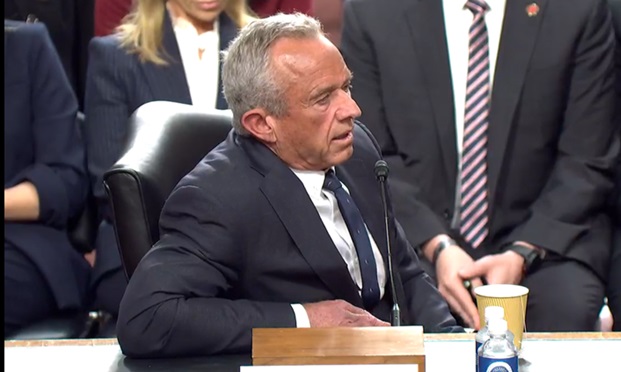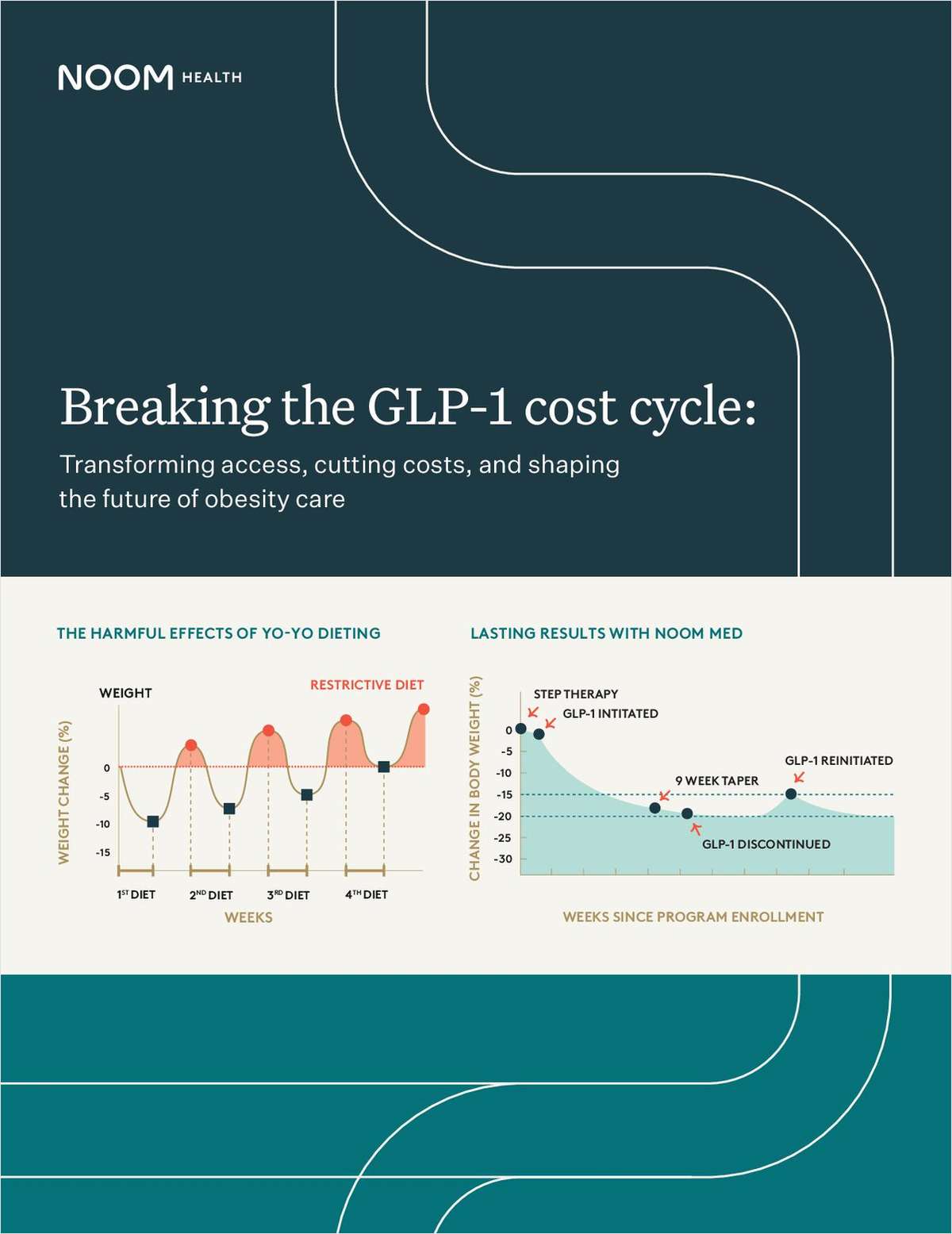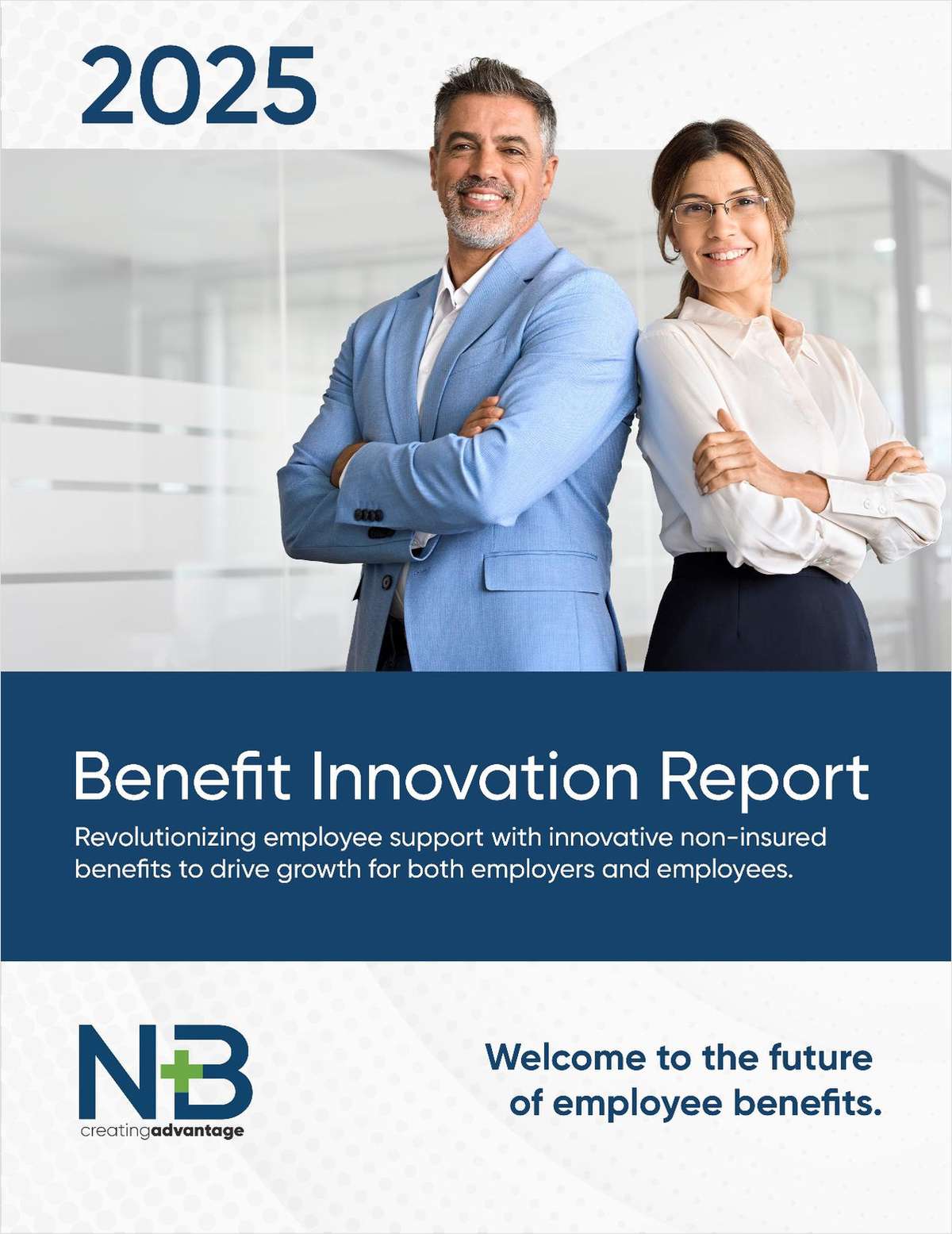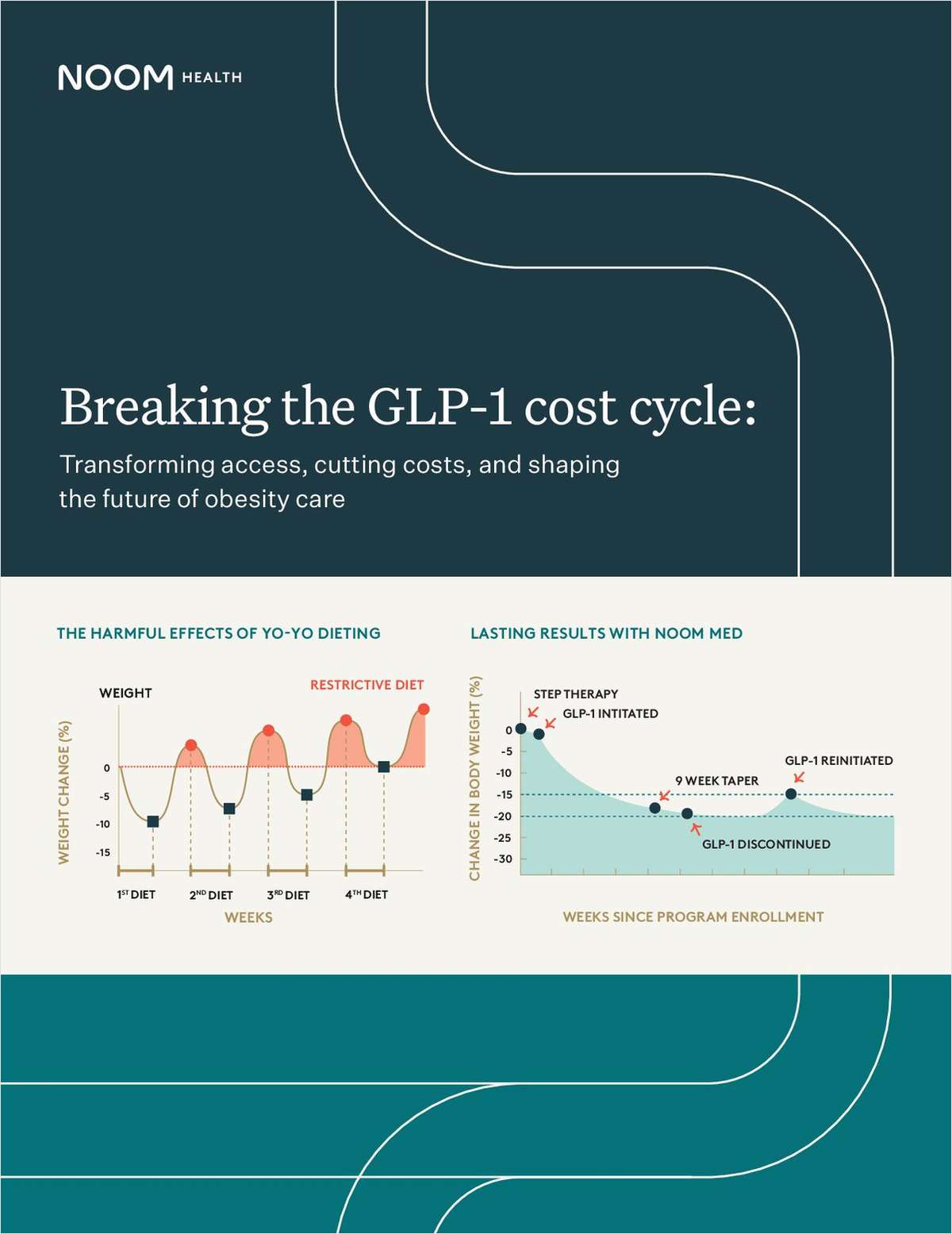Editor's Note: Since this piece was published in Benefits Selling, Anthem Inc. purchased Cigna Corp. for $48.4 billion.
When Aetna announced its intention to acquire Humana for $37 billion in early July, the shock-wave effect was almost instantaneous. Insurance commissioners and attorneys general in several states announced their intentions to review the merger, stock in both companies dropped, and some industry experts—and outsiders—wondered whether this could be a harbinger of the future of health insurance, or even a step in the direction of a single-payer system.
Then, in a smaller but still significant deal, Centene's acquisition of Health Net for $6.3 billion was announced, and the speculation about the potential impact on the industry grew more pointed.
Players in the health benefits world disagree about what the deals mean, and even whether they mean anything at all.
“Are regulators going to allow this to change the industry?” asks Kevin Ramsier, CEO and managing partner at Vesticor Advisors. “That's hard to predict; I think they're probably likely to limit the numbers of these major mergers, so only the people first to the party get the green light.”
However, he added, “Big deals like this tend to trickle down, and I do think we'll see more of these health insurers pay into more areas of the industry—technology platforms, patient engagement platforms, pharmaceutical companies and a host of other add-ons.”
Mike Sullivan, executive vice president and CMO at Digital Insurance/Digital Benefit Advisors, says bigger deals in the carrier space could be increasingly common as they begin to reflect the consolidation and integration that's already taken place to some extent in the health care provider sphere.
“Carrier consolidation is following what's going on in the provider segment,” he says. “Our entire system has been built on pricing leverage—how big are you, and when we're sitting across the table negotiating pricing, who carries a bigger stick? It's a natural by-product of the fact that the business is getting significantly tougher.”
Scott Carver, president at PlanSource, notes that “there's still a lot of fluidity around whether or not these deals will come together.” But, he added, “If they do, it sets up a much more accelerated pace for industry consolidation. It could have a very significant impact on our industry.”
Location, location, location

Susan Combs, president at Combs & Co., says that New York seems to go through a merger cycle “every five to 10 years. Seven, eight years ago, we had Oxford, United and HealthNet as three separate companies. Now, in New York, they're all one.
“I know we're talking about major players, but in New York, Oxford, United and HealthNet were all major carriers,” she adds. “It resulted in higher rates.”
The situation, however, has changed. “We have all these micro-carriers born out of the exchange,” Combs says. “Now that there are these smaller networks with localized coverage, I think it is a matter of time before consolidation happens again.”
Localized coverage is thriving in some parts of the country, so there's reason to believe it could continue to do so despite carrier consolidation.
“Health care is still very geography-centric,” Carver says. “While you might have large players who dominate at some level, I think there's still very much a need for localized insurance, if you will, that reflects the local provider community and the constituents who reside there.”
Some larger carriers, of course, will target those markets. Still, one of the most reliable ways for carriers to acquire new clients is to acquire a company. “There might be certain markets that you want to go after geographically—segments of the population you want to target that you're going to be in a much better position to target after a merger,” says Joe Torella, president of the employee benefits division at HUB International Northeast. “It really is all about having profitable membership on the books, and carriers can't always go out and get new membership by organic growth.”
What's PPACA got to do with it?
Health care experts offer several reasons why the passage of the Patient Protection and Affordable Care Act is going to drive further carrier integration.
One obvious effect of the law is the 80 percent medical loss ratio established by PPACA, which requires insurance companies to invest 80 cents out of every dollar received from consumers on claims or expenses that improve the quality of clients' health care. Complying with the new MLR guideline means that economies of scale wouldn't be a luxury for carriers—they could become a necessity. Most insurance companies can't operate at that level, says Eric Wilson, principal at Wilson & Associates.
“PPACA has led to structural uncertainty in the business,” Sullivan says, “and when there's structural uncertainty, you need to cover your bases relative to your clients. Scale is one way in which industries and companies deal with uncertainty.”
PPACA also implemented the formation of accountable care organizations on the provider side of the equation. ACOs took on more of the financial risk of caring for chronically ill patient populations. In turn, those ACOs began working much more closely with carriers.
“ACOs are popping up everywhere now,” says Ron Goldstein, CEO at Choice Administrators. “We're seeing the more local, regional carriers doing a better job, especially with branding and what they can bring to the table in that small geographic area.”
An 800-pound gorilla in the room
Of course, some industry insiders are worried that carrier mergers could be the beginning of a move toward a single-payer system.
Combs, for one, thinks that's an overreaction.
“Look at who has that kind of system,” she adds. “You're talking about countries that have a population the size of the state of Missouri. You can keep track of 5 million people.
“Even if there was a single-payer system that goes into place like there is in Canada, all the companies would be doing supplemental insurance,” she says. “The national plan is what consumers have if they can't afford anything else, and people don't want to wait to see the doctor, so all of our clients who have offices in Canada have supplemental coverage.”
Carver agrees.
“If it happened in the private sector, then I think monopoly laws would be invoked and it would be prevented,” Carver says. “The only way we'd get to single payer is if it were government-driven. I don't see that happening.”
Torella notes that Medicare is a perfect example of why the government wouldn't go to a single-payer system, noting rampant amounts of fraud and abuse within the government system.
“It's very difficult to manage the delivery of care in the same way you would deliver life insurance,” Torella says. “If you have a serious illness, navigating the system is very difficult.
Plus, he adds, “I don't think people realize that in other single payer systems, you give up an awful lot in the transaction of health care, and I don't think certain markets are ready to give up that autonomy and access.”
Still, as Ramsier points out, “There is a lot of support for single-payer models, and supporters say health care is a right of every citizen. There are still an enormous number of Americans who are under-insured—they have insurance but can't really use it because of high copays and deductibles.”
On the con side, he adds, “the best arguments I've heard against single-payer is that the government's power to dictate is limited to two key areas in that system: the services that are provided and the reimbursement rate. Then you hear warnings about what happens to the level of care and wait times.”
Blurred lines
“The silver lining for me is that the lines will continue to blur between who's a provider and who's a carrier, because that's what we need,” Sullivan says. “Competition is going to emerge. I'd love to see new, equity-funded entrants. It's very tough to see new participants on the carrier side becoming relevant, but you see some of that in the small group market.
“We may just find that providers and carriers exist less in terms of silos and more in terms of 'co-opetition.' I think we may see more of that. And that may be good for consumers.”
Because ACOs carry some of the financial risk for patient care, this segment of the provider community is especially apt to work with carriers. “We're starting to see ACOs exhibit an appetite for participating in private exchanges,” Carver says. “We run our own private exchange, and we also power several other private exchanges for brokers. ACOs have expressed interest in participating in them.”
Will we still need brokers tomorrow?
The trend toward increased transparency in complex transactions is already a source of potential disruption to the traditional health benefits model—and when that trend aligns with significant carrier mergers, it's no wonder brokers begin to worry about the longevity of their careers. Streamlined companies and marketplaces often mean simplified processes or, at least, fewer players to muddy the waters.
“If anything, there will be fewer plans in the marketplace,” Goldstein says. “Group carriers get together and do a real merger—two carriers become one—and you're not going to have 82 plans between the two of them in the end; you'll have 35.”
Carver said it's also likely plans will become “more standardized, more commoditized and significantly more transparent” if consolidation catches on as a trend.
“So helping employers, particularly on the group side, go through an election process will become an area of expertise less needed in the market.”
However, American consumers seem to prefer choice—to some extent.
“There are so many options out there, and I think in general, that's what the American public wants,” Ramsier says. “I think there will always be a need for professionals.
“Health care is so personal,” he adds. “Every single situation is completely different, and just grabbing something off the shelf might not be what you need, or might not be what your neighbor needs. Having a relationship with someone whose job is to stay in tune with the different changes and options out there will always be in demand.”
“There is so much going on in the industry, and so much of it involves greater levels of complexity,” Sullivan says. “But what isn't being delivered, what doesn't exist fundamentally, is wisdom for employers and consumers that will help them know what to do. Brokers and advisors need to understand how to bring a greater level of simplicity into the space.”
PPACA also streamlined health plans by using what Wilson calls a “cookie-cutter approach. Whereas before, this plan might offer mental health services and this company might offer maternity coverage, now most of the plans are the same in a lot of ways.”
What differentiates plans and carriers now, he adds, is where each excels. One carrier might have better prescription coverage than another with a wider network. And brokers can provide the most value to consumers through their knowledge of the nuances of each plan and carrier.
The long and winding road
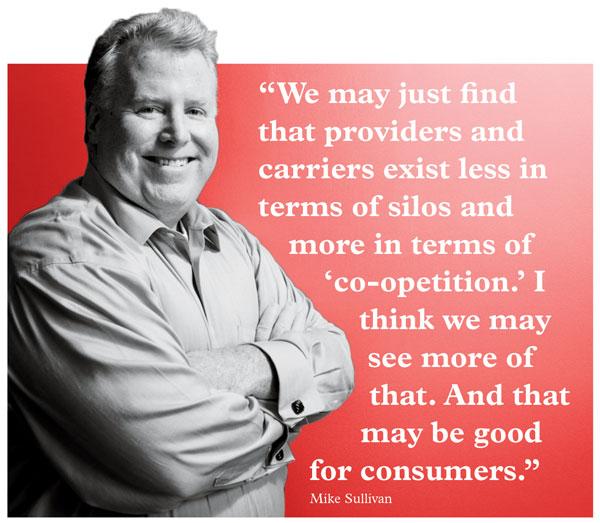
“Brokers are going to have to change their model, and they're going to have to look to non-medical benefits and insurance lines to draw their revenue streams, which are very viable,” Carver says. “As these medical plans with higher deductibles and maybe more limited coverage become popular, there are also a number of gap plans out there and things that can provide additional health and financial security for folks that can be delivered through a benefit program.
“This shouldn't be gloom and doom,” Carver adds. “Folks who are willing to adapt their business models will thrive.”
Brokers will also have to think more about individuals than companies when it comes to health benefits, Ramsier says.
“I think it comes down to relationships,” he says. “The relationships have really been at the employer level. Now the industry is peeling that onion back on a personal level and understanding the needs and wants and desires of the person who's choosing a policy. That has become more important than ever, and I think that's going to continue to be the case. It's about the people who work in the company and not the company itself.”
“We'd be in trouble if we didn't find ways for the system to reinvigorate itself, good or bad,” Torella says. “You can't have thousands of different islands doing things differently; sometimes, consolidation might be beneficial.”
Sullivan also believes that brokers need to rethink the services they provide. “Everybody is redefining what exists inside the four walls, whether it be providers or carriers,” he notes. “I think that should extend to the advisors as well. When you start to think about the possibilities and not all the risks and challenges associated with the business, it's a very liberating thing.”
Pros and cons to the Aetna-Humana merger
By Mark Roberts
Though it will take time for the dust to settle on the Aetna-Humana merger, the deal already raises a number of considerations, pro and con. At the end of the day, depending on whose perspective is voiced, the new group is a big winner or a big loser. It remains to be seen, as the merger won't even be completed until 2016. Time will tell.
Money is definitely a factor in the decision, as each company has more than $100 billion in annual revenue. Aetna is the third largest U.S. health insurer, and Humana ranks No. 4. Together, they would sit atop the industry.
The agreement would bolster Aetna's presence in the Medicaid program and Tricare coverage for military personnel and their families, as well as nearly triple Aetna's Medicare Advantage business. The merger hopes to avoid too much anti-trust scrutiny from the federal government, typical in big deals like this one.
From the sidelines, here are a few positives and negatives to the Aetna-Humana merger.
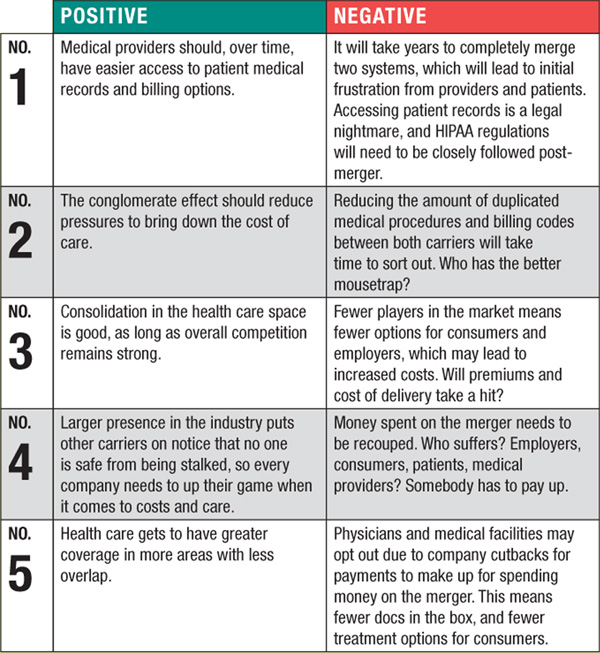
It's a brave new world, according to the Supreme Court and everyone else with an opinion that counts. Will the merger between Aetna and Humana survive? Possibly—and probably. There's too much at stake for each organization for it not to move forward. Let's hope private pay doesn't eventually become public payout.
Complete your profile to continue reading and get FREE access to BenefitsPRO, part of your ALM digital membership.
Your access to unlimited BenefitsPRO content isn’t changing.
Once you are an ALM digital member, you’ll receive:
- Breaking benefits news and analysis, on-site and via our newsletters and custom alerts
- Educational webcasts, white papers, and ebooks from industry thought leaders
- Critical converage of the property casualty insurance and financial advisory markets on our other ALM sites, PropertyCasualty360 and ThinkAdvisor
Already have an account? Sign In Now
© 2025 ALM Global, LLC, All Rights Reserved. Request academic re-use from www.copyright.com. All other uses, submit a request to [email protected]. For more information visit Asset & Logo Licensing.


